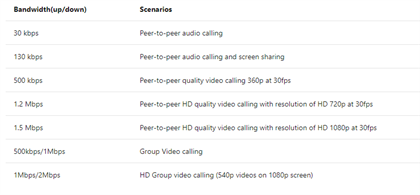

- #Zoom bandwidth requirements 720p
- #Zoom bandwidth requirements for android
- #Zoom bandwidth requirements download
Performing other tasks at the same time will also increase the download and upload required.Ī number of factors may limit how much bandwidth your individual computer has available while working from home. With more callers, or with screen sharing this requirement increases.

Zoom recommends at a minimum 1.5 Mbps for both Download and Upload. For example, for a basic 1 on 1 Zoom Video Call. Some home routers attempt to limit the impact by slowing down downloads, but it will greatly impact or prevent soft phone / zoom calls etc.įor tasks such as a video call or voice call, your "Upload" speed is just as important as your download speed. Netflix - Consume's 3-5 Mbps while streamingĭownloading files, or game installs - This will consume all available bandwidth until the download completes. Basic video consumption on the internet can consume a large amount of the available bandwidth at any one time. Upload speeds become much more important for interactive applications such as Zoom or when adding content or video to a course being delivered remotely.Shared/Unshared Internet Connection Why does that matter?įor every device in your home that is actively utilizing your internet connection the amount of bandwidth that is available for your work activities is decreased.
#Zoom bandwidth requirements 720p
For 1:1 video calling: 600kbps (up/down) for high quality video 1.2 Mbps (up/down) for 720p HD video Receiving 1080p HD video requires 1.8 Mbps (up/down) Sending 1080p HD video requires 1. Streaming videos or music, reading email, are all activities that don’t really need upload bandwidth once they’re initiated. Per Zoom’s website, here are all the internet bandwidth requirements for different activities on Zoom. With most internet plans, download speeds are much faster than upload speeds. If you post to a video to iLearn, your upload speed would determine how long it takes your video post to get to the iLearn server for all your students to see. It is the speed at which information travels from your internet-connected device to the internet. Upload speed is the opposite of download. The download speeds have a higher accuracy when if no streaming services are running and no large files are being downloaded when the test is running. It is important to note, your Download speeds may be slower and not be accurate if there are multiple users in the home streaming video or downloading large files. For example, if you open an iLearn website on your computer, your download speed would determine how long it takes to load the page. download speedĪfter you finish the speed test, you’ll see two numbers in the results: one is your upload speed and the other is your download speed.ĭownload speed is the speed at which information travels from the internet to your internet-connected device. It is often a good idea to run speed test from multiple devices to get more accurate results. If your internet service does not meet these recommendations, you can still use Zoom without the video and just use the audio portion since audio requires far less download and upload bandwidth. Also, if you make HD videos or any other type of large file and need to upload them to iLearn or the cloud, your upload speed will come into play.įor quality video chat Zoom session, your internet service speeds should be in 10 to 25 Mbps download speed range and at least 3 Mbps upload speed for best results. That’s especially important if you have multiple people doing this same thing at the same time since everyone on the same home network shares internet bandwidth. If you need to send a file or video to a student, you’ll want good upload speed. Here is a breakdown of the average internet speed required for a Zoom meeting depending on different scenarios. For a better Zoom experience, AT recommends speeds above 20Mbps. Zoom internet speed requirements 800kbps/1.0Mbps (up/down) for high quality video For gallery view and/or 720p HD video: 1.5Mbps/1.5Mbps (up/down) Receiving. Do I need faster internet to use Zoom Zoom is very flexible when it comes to bandwidth - visit the Zoom bandwidth requirements page - and recommends. While Zoom only requires 1.5Mbps to use, our experience suggests that speeds below 5Mbps are not adequate for two-way interaction. Zoom provides bandwidth requirements for meetings at the URL below: This post was most recently updated on July 23rd, 2022 5 Mbps for Voice over Internet Protocol (VoIP) calling.

#Zoom bandwidth requirements for android
You can also download the free Speedtest mobile app by Ookla for Android and iOS to test your connection on your mobile device. The bandwidth requirements section of Zoom’s website allows users to enter their current speeds on an upstream connection speed of 1 on Zoom 0 Mbps up and down for single screen 2. There are many websites that can test your internet connection speed. Because speed is so vital to making your internet-dependent activities work well, you should test your internet speed regularly. Knowing your internet speed and how it compares to recommendations from internet-based services, such as Zoom, can help you get the most out of your connection.


 0 kommentar(er)
0 kommentar(er)
